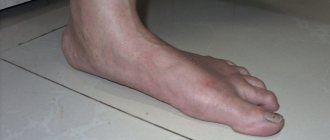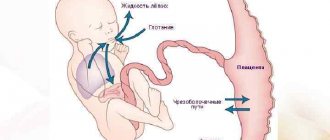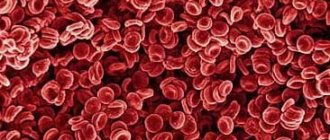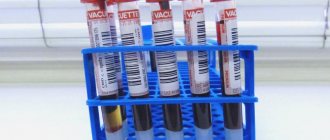Diarrhea is a symptom that is quite common in pediatric practice. In a child, starting from the age of one, the frequency of stool varies from 1 to 2 times a day. Fecal masses should be shaped, brown in color and moderately hard. There should be no impurities of blood, greens and mucus. With diarrhea, there is an increase in stool frequency, and stool becomes unformed. Before treating diarrhea in a child, you should familiarize yourself with the latest information to avoid mistakes.
Features and nature of diarrhea
This condition is characterized by increased intestinal motility with changes in stool color and consistency. The basis of the problem is the accelerated passage of food through the intestines, which is accompanied by insufficient absorption of fluid, as well as an increase in the formation of mucus. In healthy infants, sometimes after eating or during feeding, stool occurs due to the gastrocolytic reflex.
There are pathological defecation:
- with a large amount of stool (for diseases of the pancreas, stomach, dysfunction of the small intestine);
- with a small amount of stool (with peptic ulcers and colitis affecting the distal intestine).
Loose stools are normal for babies. Sometimes the stool takes on a greenish tint, which occurs mainly when feeding cow's milk - this is not dangerous. Diarrhea can also occur with a urinary tract infection.
Frequent soft stools (4-6 times per day) can be observed in healthy infants; This should not be a cause for concern unless there are signs of anorexia, vomiting, weight loss, weight gain, and bloody discharge. Increased peristalsis is common for breastfed babies. How many days can a child have diarrhea without consequences? The risk of developing complications of diarrhea in children at any age depends on the nature of the course - acute (up to 14 days) or chronic (from 2 weeks or more). In some situations, especially in children under one year of age, diarrhea can lead to serious complications within a few hours.
Possible causes of stool turning black
A child's stool may be black for a variety of reasons. In some cases, the factors that caused the coloring of the stool are normal and do not pose any danger, but in some situations such causes must be eliminated without delay. In this regard, it is important to determine the true cause of black stool in a child. The color may be affected by the following reasons and phenomena.
Causes of diarrhea in a child
The acute process is often infectious in nature, especially if it occurs suddenly or is combined with vomiting, blood, fever and anorexia. Maintenance treatment is prescribed based on clinical diagnosis and continues until improvement occurs.
Chronic diarrhea in a child without fever can develop due to the following reasons:
- Allergic gastroenteropathy. Cow's milk protein causes bloody diarrhea and vomiting. The condition is normalized when hydrolyzed protein is included in the diet instead of cow's milk. Most children improve spontaneously.
- Disaccharidase deficiency. It is characterized by the absence of lactase, which breaks down lactose into galactose and glucose. The disorder may be congenital or develop after a gastrointestinal infection, acting as a temporary disorder. An improvement in the condition after eliminating lactose or other carbohydrates from the diet confirms the diagnosis. In this case, the child has light diarrhea and there is severe irritation in the perineal area caused by liquid feces.
- Gluten enteropathy (celiac disease). In celiac disease, the wheat protein fraction damages the intestinal mucosa, which can impair fat absorption. This leads to malabsorption and anorexia, which is accompanied by the passage of copious amounts of stool. Changes in the body occur when consuming products made from wheat flour and dishes containing gluten.
- Cystic fibrosis. Cystic fibrosis is characterized by the development of pancreatic insufficiency, which is accompanied by a deficiency of trypsin and lipase. In this case, there is a large loss of fat and protein in the stool, which means that physical development is delayed. The stool is usually smelly. Children with cystic fibrosis often develop respiratory problems.
Inflammatory processes in the intestines and some infections can also cause diarrhea. The most common is gastroenteritis, an infection of the small intestine that is accompanied by vomiting. The main danger of this disease is dehydration and water-electrolyte imbalance. Dehydration develops especially often and quickly against the background of rotavirus infection.
The causes of secretory diarrhea in a child are usually due to infection:
- bacterial (staphylococcus, salmonella, E. coli, shigella);
- parasitic (giardiasis, amoebic dysentery).
Secretory diarrhea can also be caused by inflammatory bowel disease. In children it can occur with excessive consumption of carrots and peas. The reason is increased intestinal motility. This type of diarrhea goes away on its own over time. Diarrhea with blood in a child develops against the background of an acute intestinal infection - campylobacteriosis, necrotizing enterocolitis, intussusception (intestinal obstruction).
Black diarrhea
After taking activated carbon and some vitamin and mineral preparations, stool may turn black. This may also be due to internal bleeding - from the stomach, esophagus or intestines, which occurs against the background of serious pathologies (ulcers, cancer, polyps, etc.). Associated symptoms of internal bleeding may include pale complexion, dizziness and anemia.
If you have black diarrhea, you should consult a doctor immediately. For diagnosis, a specialist will prescribe fibroesophagogastroduodenoscopy (examination of the esophagus, stomach cavity and duodenum using a gastroscope, which is inserted into the stomach through the mouth and esophagus) or colonoscopy (probing of the colon).
Chronic diarrhea
Frequent diarrhea in a child can manifest itself as a mild illness or more serious disorders. At the same time, the intestinal walls become susceptible to various allergens and toxins, and the protective functions of the liver are reduced. The body absorbs vitamins and minerals worse, metabolic processes worsen, and liver and pancreas diseases occur.
The following factors can trigger the development of chronic diarrhea:
- long-term use of medications, especially antibacterial ones;
- long-term treatment with hormonal drugs and NSAIDs;
- unbalanced diet;
- immunodeficiency states;
- stress, emotional overstrain.
Chronic diarrhea causes nausea, loss of appetite, bad taste in the mouth, belching, pain and bloating, weakness and trouble sleeping. To make a diagnosis, a microbiological examination of the stool is performed, as well as an assessment of the digestive system. Therapy is aimed at eliminating the causes and restoring the general condition.
Diarrhea with mucus
Mucous diarrhea in a child develops against the background of a violation of the intestinal microflora, polyps and hemorrhoids. Mucus binds and removes pathogenic microorganisms. Clinical signs of hemorrhoids include itching and bleeding from the anus. Intestinal diverticulitis also causes mucus to be secreted in the feces. Associated symptoms are abdominal pain arising on the left side and flatulence.
Diarrhea with mucus in children occurs as a result of insufficient bowel function. As a rule, this is associated with poor nutrition. This condition is accompanied by malaise, nausea and rumbling in the stomach. Liquid feces with mucus also occur with IBS (irritable bowel syndrome). To identify the disease and the purpose of therapy, you need to contact a specialist and conduct a diagnosis.
Diarrhea and fever
Diarrhea, vomiting and fever are the main signs of an intestinal infection, which can be caused by bacteria or viruses. An accurate diagnosis can only be made by a doctor after examination.
In the first hours after the onset of alarming symptoms, frequent small drinks are necessary. Dark colored urine may indicate a lack of fluid in the body. Normalizing the water-salt balance during intestinal infections is extremely important. Refusal of food and heavy drinks in case of diarrhea, vomiting and fever is a necessary condition. Drug treatment of intestinal infections is carried out under the strict supervision of a doctor.
Severe diarrhea
If the small intestine is affected, severe diarrhea may occur. This can happen during food poisoning and intestinal infections. Often such stools are watery, may contain food debris and do not cause abdominal pain. Bile acids and peptide molecules can promote the release of water and ions. The severe condition can occur when the absorption of bile and fatty acids is impaired, such as in Crohn's disease.
Using a new food
In the first months of life, the child’s intestines are just beginning to adapt to activities and external influences. At this time, the digestive system begins to learn to digest new foods, and therefore the introduced complementary foods do not always go through the full processing cycle. During this period, you can often observe the appearance of black spots in the stool. In addition, food particles that have not been completely digested may be found in the stool.
Why a child’s stool can be black is of interest to many mothers.
Establishing diagnosis
The medical history focuses on the frequency and type of stool, and also relies on associated symptoms. The addition of temperature and vomiting indicates an infectious lesion of the gastrointestinal tract. The nature of the diet matters. Information about diarrhea, which began after the introduction of certain cereals (oats, wheat), indicates gluten enteropathy (celiac disease), information about a violation of the type of stool after including other products in the diet indicates food intolerance.
When examining the patient, the presence of signs of dehydration is taken into account, the general condition is assessed, and the abdomen is examined and palpated. Delay in physical development indicates more serious abnormalities in the body. In children with suspected cystic fibrosis, the condition of the internal organs is assessed.
Laboratory and instrumental research includes:
- determination of electrolyte levels during dehydration;
- determination of sodium and chlorine concentrations if cystic fibrosis is suspected;
- if an infectious process is suspected, examination for viruses, bacteria and parasites.
With celiac disease, an increased amount of specific antibodies is found in the blood. Diet changes can be used for both diagnosis and treatment.
Treatment of diarrhea in a child
Therapy consists of providing adequate oral (or, less commonly, intravenous) rehydration. Antidiarrheal drugs (for example, loperamide) are generally not recommended for children in the first year of life and early childhood. Sorbents are often prescribed. For chronic diarrhea, adequate nutrition should be maintained, especially the intake of fat-soluble vitamins. In case of illness, special methods for treating diarrhea in children are prescribed (for example, a gluten-free diet for celiac disease).
Many parents do not know what to do if their child has acute diarrhea or periodic diarrhea. In any case, you need to consult a doctor. First, you should call a pediatrician at home or use an online consultation at the RebenOK clinic. The doctor will conduct an initial examination and, if necessary, prescribe the necessary examinations. The specialist will tell you how to treat diarrhea in a child and give additional recommendations.
First bowel movement after birth
This may be an explanation for why your baby has black stool.
The fact is that the intestines of newborn babies are not empty; there is meconium inside it. This term refers to a mass that consists of epithelial cells, water, bile, mucus, and prenatal hair. The child swallows these particles together with amniotic fluid when he is in the womb. Therefore, in the first 2-3 days, a newborn’s feces are black. After the meconium has completely passed from the intestines, the stool becomes a normal yellow color.
Why might a one-month-old baby have black stool?










